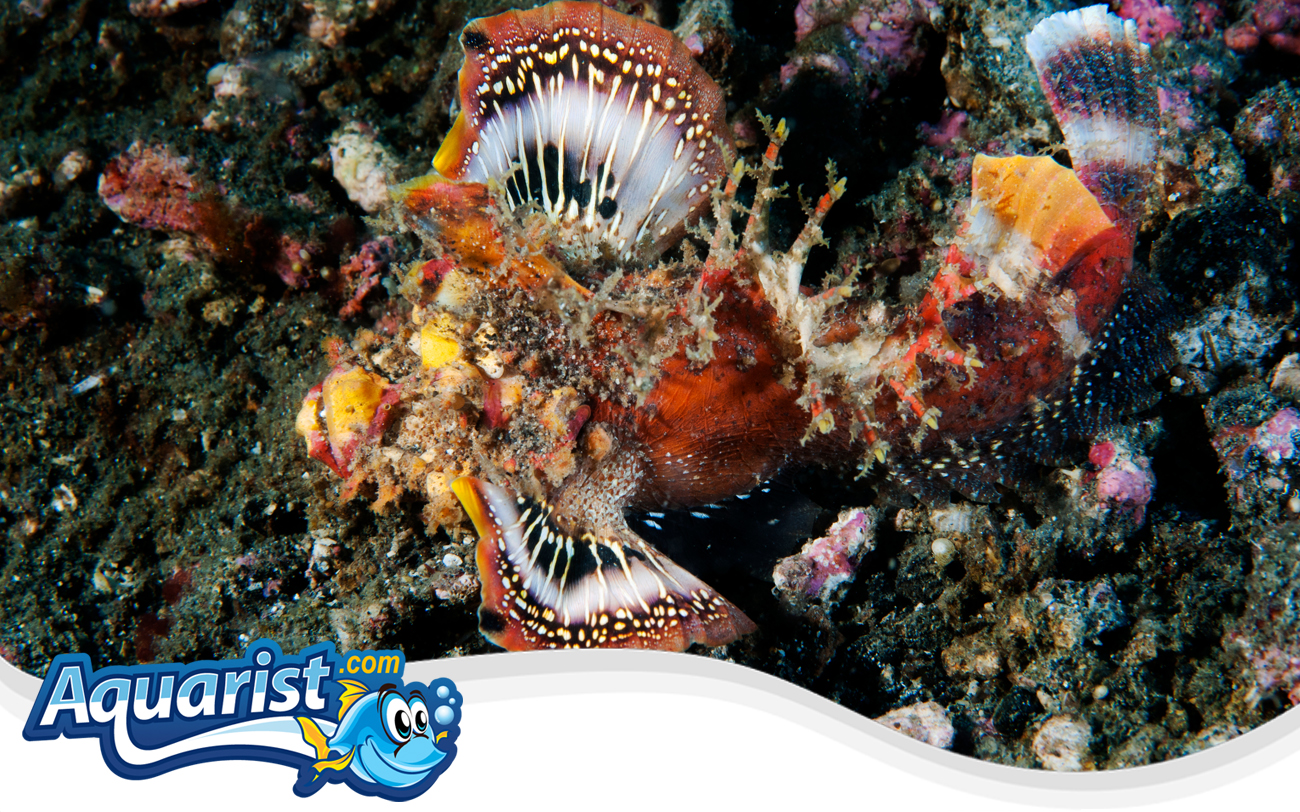Overview
- Native to the Indo-Pacific, often found in sandy or muddy seabeds near coral reefs and estuaries.
- Highly camouflaged with a rough, textured body that blends seamlessly into its surroundings.
- One of the most venomous scorpionfish species, possessing potent venom in its dorsal spines.
- Slow-moving but highly effective at ambushing unsuspecting prey.
Feeding
- Carnivorous, primarily feeding on small fish, shrimp, and crustaceans.
- Prefers live prey but can be trained to accept frozen or prepared seafood over time.
- Requires infrequent but substantial meals, typically every two to three days.
- Patience is needed when introducing non-live foods, as it relies on movement to trigger feeding.
Habitat
- Often buries itself in soft substrates, leaving only its eyes and mouth exposed.
- Best kept in a species-only or predator-friendly tank due to its slow-moving nature.
- Requires a sandy or fine-gravel substrate to accommodate its natural burrowing behavior.
- Minimal water flow is preferred, as strong currents can dislodge it from its resting spots.
Fish Care
- Optimal water temperature: 75-82°F (24-28°C).
- pH level: 8.1-8.4, with a specific gravity of 1.023-1.025.
- Requires excellent water quality to prevent infections, especially around its delicate fin structures.
- Care should be taken when handling or maintaining the aquarium, as its venomous spines can cause severe pain.
Compatibility
- Best kept in a solitary or predator-focused aquarium.
- Not suitable for tanks with small fish or invertebrates, as they will be viewed as prey.
- Can coexist with other large, slow-moving predatory fish that do not compete for food.
- Should not be housed with highly active or aggressive species that may stress it out.
Aquarium Behavior
- Spends most of its time lying motionless, waiting for unsuspecting prey to swim by.
- Capable of sudden bursts of movement when hunting or disturbed.
- Relies on its camouflage to avoid detection, often blending perfectly with the substrate.
- Exercise extreme caution when maintaining the tank to avoid accidental stings.


